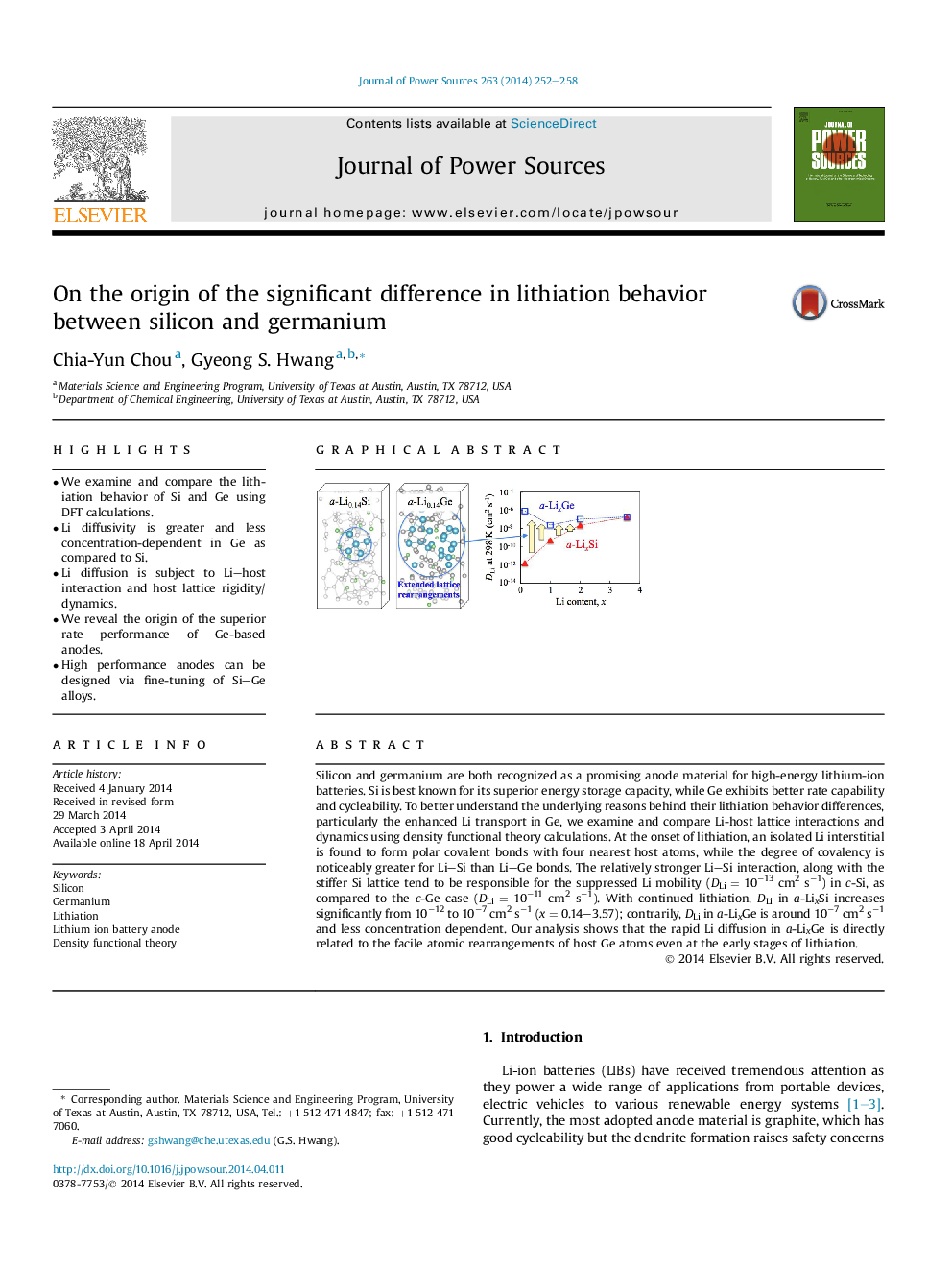| Article ID | Journal | Published Year | Pages | File Type |
|---|---|---|---|---|
| 1286501 | Journal of Power Sources | 2014 | 7 Pages |
•We examine and compare the lithiation behavior of Si and Ge using DFT calculations.•Li diffusivity is greater and less concentration-dependent in Ge as compared to Si.•Li diffusion is subject to Li–host interaction and host lattice rigidity/dynamics.•We reveal the origin of the superior rate performance of Ge-based anodes.•High performance anodes can be designed via fine-tuning of Si–Ge alloys.
Silicon and germanium are both recognized as a promising anode material for high-energy lithium-ion batteries. Si is best known for its superior energy storage capacity, while Ge exhibits better rate capability and cycleability. To better understand the underlying reasons behind their lithiation behavior differences, particularly the enhanced Li transport in Ge, we examine and compare Li-host lattice interactions and dynamics using density functional theory calculations. At the onset of lithiation, an isolated Li interstitial is found to form polar covalent bonds with four nearest host atoms, while the degree of covalency is noticeably greater for Li–Si than Li–Ge bonds. The relatively stronger Li–Si interaction, along with the stiffer Si lattice tend to be responsible for the suppressed Li mobility (DLi = 10−13 cm2 s−1) in c-Si, as compared to the c-Ge case (DLi = 10−11 cm2 s−1). With continued lithiation, DLi in a-LixSi increases significantly from 10−12 to 10−7 cm2 s−1 (x = 0.14–3.57); contrarily, DLi in a-LixGe is around 10−7 cm2 s−1 and less concentration dependent. Our analysis shows that the rapid Li diffusion in a-LixGe is directly related to the facile atomic rearrangements of host Ge atoms even at the early stages of lithiation.
Graphical abstractFigure optionsDownload full-size imageDownload as PowerPoint slide
